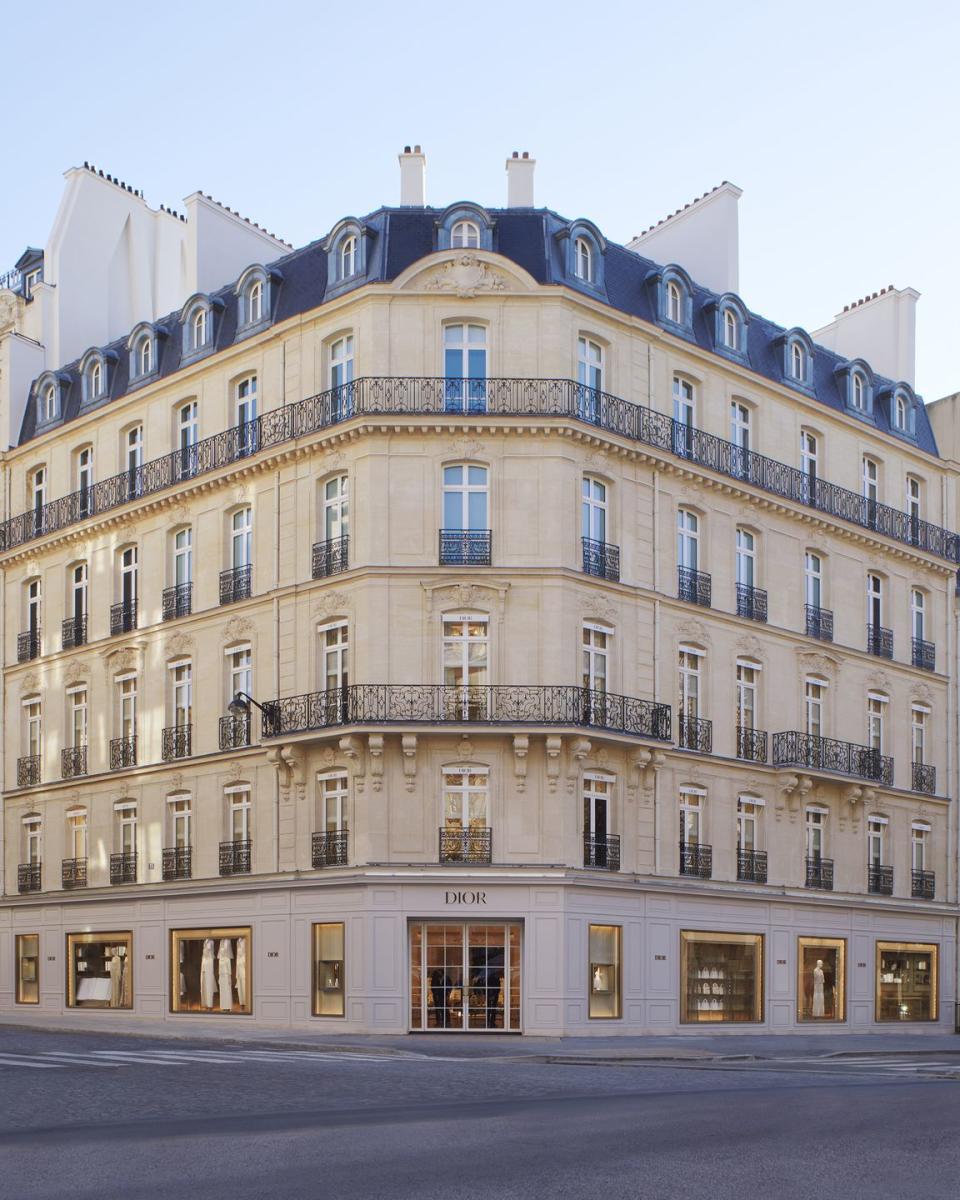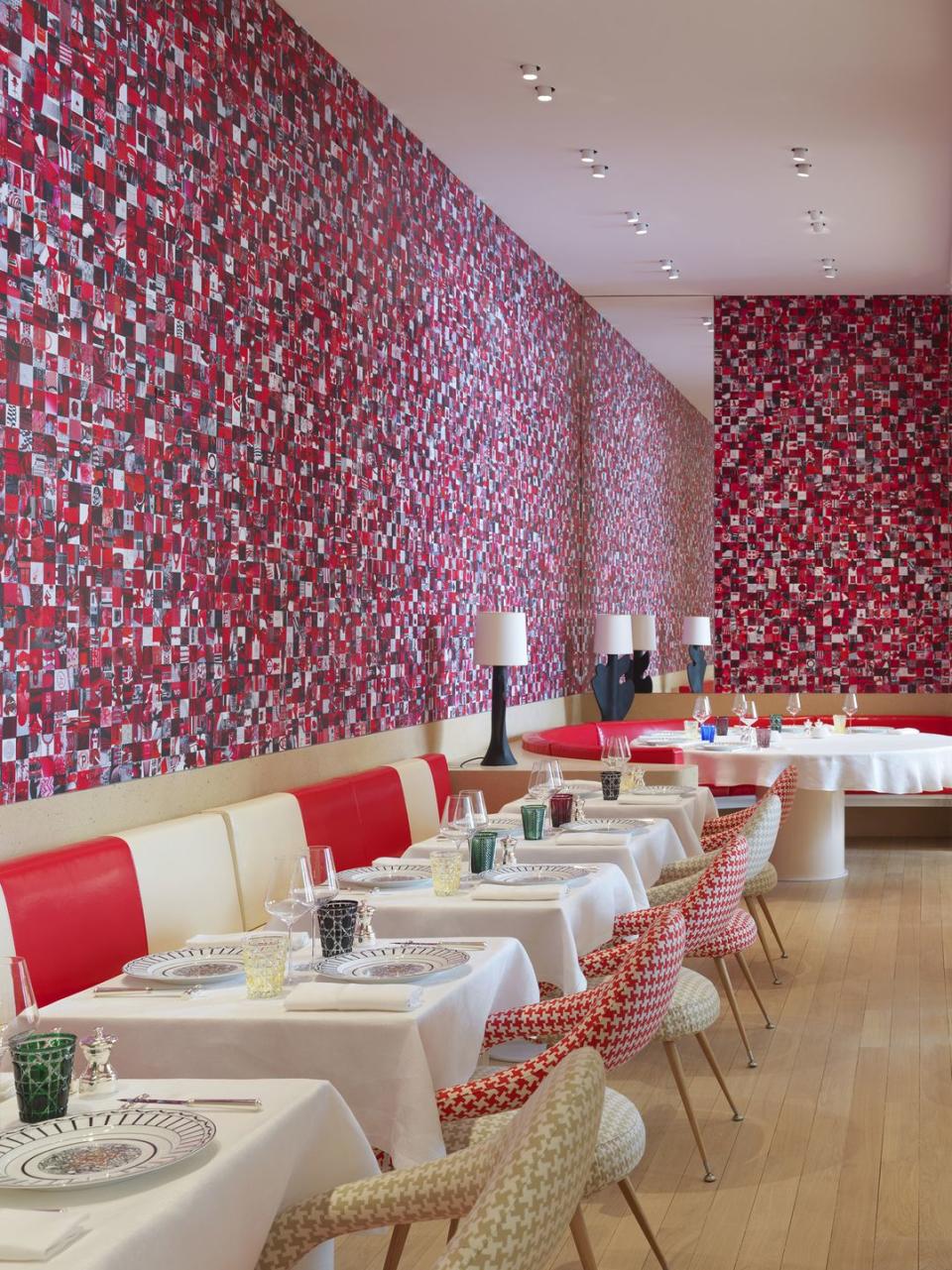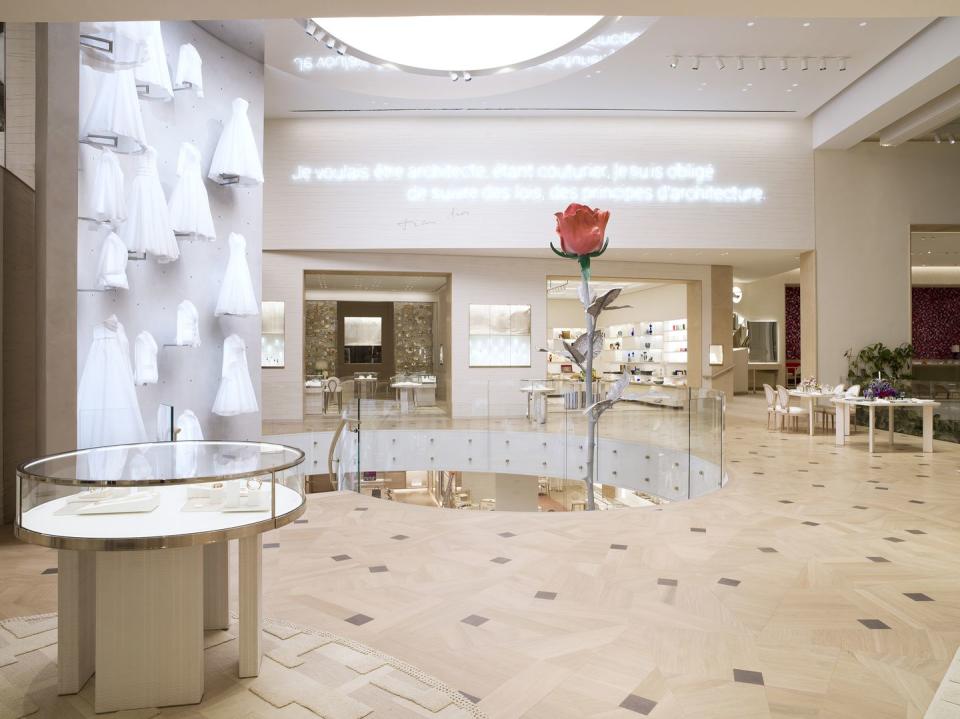Take a Closer Look Inside Dior’s Lavishly Reimagined Paris Flagship

"Hearst Magazines and Yahoo may earn commission or revenue on some items through the links below."
In 1946, when the legendary couturier Christian Dior first opened his namesake boutique at 30 Avenue Montaigne in Paris, his reasoning for doing so was simple: “My desire [was] to create a house in my name. A house where everything would be new.”
The famously superstitious Monsieur Dior might be surprised at how prophetic his own words turned out to be. Some 75 years later, everything old is new again at 30 Avenue Montaigne, which reopened last month after a two-year renovation and expansion.

The storied address has been transformed into the ultimate Dior wonderland, encompassing some 108,000 square feet (about the size of the City of Light’s famed Opéra Garnier, in case you were wondering) of airy retail, hospitality, exhibition, and leisure space. The complex comprises a restaurant, a patisserie, and gardens as well as salons for beauty, jewelry, ready-to-wear, haute couture, and the Maison Dior home collection; in addition, it is topped with its own luxury hotel suite—meaning that the most ardent Dior fans can now quite literally have the keys to the house.
It was only fitting that, for such a larger-than-life space, Dior would enlist a larger-than-life architect, so the house tapped frequent collaborator Peter Marino to oversee many of the store’s spaces, including the haute couture salon, dining areas, the private suite, and a series of verdant indoor and outdoor gardens. Marino is no stranger to the Dior universe, having worked with his New York firm on numerous Dior projects—including two past renovations of 30 Avenue Montaigne. But the pressure was on for this particular commission: “Three strikes and you’re out,” Marino quipped during a press conference.
“It’s a bit like Cronus, the giant who ate his children,” Marino added. “But better to eat your own children than to have someone else eat them.”

For its portion, the Marino team wanted to honor the building’s heritage and design hallmarks (think: parquet floors, delicate caning, and the house’s signature toile de Jouy) but didn’t want it to devolve into pastiche. “You cannot forget the past—it’s there—but you don’t have to live your life in the past,” Marino explained. “A fake past is what I don’t like. I am a modern architect; this is what I do.”
As a result, the spaces were kept expansive, light-filled, and unabashedly contemporary; most are awash in a chic palette of white and cream. In Le Restaurant Monsieur Dior, chairs are clad in Dior’s iconic houndstooth, and a pixellated red feature wall is, upon closer inspection, patterned with miniature images from Dior’s archive. But there are still hints at the past here and there: a fitting room is covered in pink toile de Jouy (“Vraiment, vraiment Dior,” per Marino); a spectacular rotunda has timber beams configured in a pattern that evokes the house’s caning, or cannage; and the flooring throughout is done in a pale timber parquet.

As an homage to Dior’s obsession with flowers, Marino’s firm, along with the Belgian landscape architect Peter Wirtz, created three separate garden spaces throughout the building, including a winter garden and a landscaped roof. “The place that [Dior] was most happy was not in his little studio but completely relaxed in his garden,” Marino explained. “In our times now, after COVID and all the stress, the universal symbol for feeling good is a garden” —lending even more relaxation to retail therapy.

Collectible works of art and design were also central to the store’s concept; most of them were handpicked by Marino and the Dior team (“I go to 50 art galleries a week,” Marino said). A monumental rose by sculptor Isa Genzken blooms in the crook of a spiral staircase, a Claude Lalanne ginkgo leaf table gleams in the haute couture salon, and an ethereal installation by Paul Cocksedge floats from the main rotunda.

The most compelling artistic creations on view, however, can be discovered in 30 Avenue Montaigne’s dedicated Dior gallery. The spaces were designed by Nathalie Crinière, the mastermind behind Dior’s recent traveling exhibition, who translated some of her glittering scenography from that show to the rooms.
So will all of these interventions be enough to usher 30 Avenue Montaigne into its next 75 years? “I don’t think I will live long enough to do it a fourth time, but we’ll see,” Marino joked.
You Might Also Like

